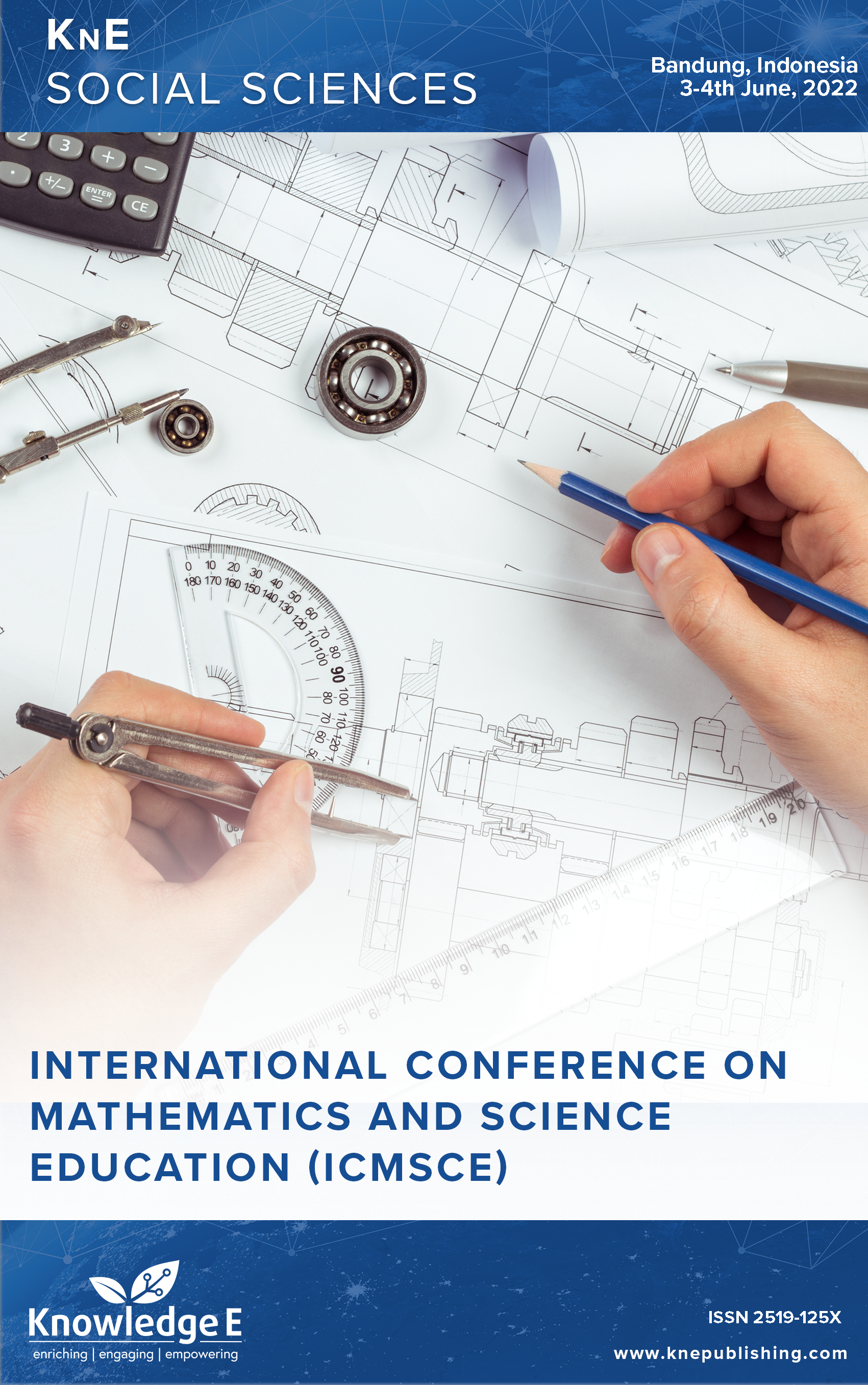Adopting Model United Nations (MUN) in Discussion Method in Learning Environmental Pollution: D-MUN Method
DOI:
https://doi.org/10.18502/kss.v9i13.16081Abstract
In the classroom, the discussion method has objectives to train the students with several skills, such as assertiveness when arguing with opposing ideas, the ability to brainstorm, groupthink, and improved communication with their peers. However, implementing the discussion method requires more preparation to run well. Improper organization of class discussion leads to no clear point or lesson learned that is explicitly stated after class discussion. Students’ participation becomes difficult to monitor whether all students contribute during the class discussion. They only talk when being pointed out by the teacher, and they will not speak if they do not have something to say. Science teachers’ experiences in conducting discussion methods were gathered before the study. Using the results from the preliminary survey, a conceptual framework of the discussion method by adapting Model United Nations (MUN), thus the so-called D-MUN METHOD, in learning about environmental pollution was developed. By adapting the structure of the discussion used in MUN to the classroom while learning science topics, the discussion in class becomes more engaging and increases students’ active participation and clarity of key concepts. The issues that become the topic of discussion should be relevant to the science content and include ill-structured problems. Therefore, the D-MUN METHOD will encourage students to present their solutions, which depends on their point of view (assigned as a specific country/region representative), and, in the end, come together to produce the best resolution.
Keywords: Model United Nations (MUN), discussion method, environmental pollution, D-MUN method
References
Mazaya MS. “Logical framework for smart discussion in learning process.,” In: Journal of Physics: Conference Series. pp. 042002. IOP Publishing (2019). https://doi.org/10.1088/1742-6596/1157/4/042002. DOI: https://doi.org/10.1088/1742-6596/1157/4/042002
Garside C. “Look who’s talking: A comparison of lecture and group discussion teaching strategies in developing critical thinking skills,” p. 1996. DOI: https://doi.org/10.1080/03634529609379050
Gall MD, Gillett M. The discussion method in classroom teaching. Theory Pract. 1980;19(2):98–103. DOI: https://doi.org/10.1080/00405848009542881
Gay GH, Betts K. From discussion forums to Emeetings: integrating high touch strategies to increase student engagement, academic performance, and retention in large online courses. Online Learn. 2020;24(1):92–117. DOI: https://doi.org/10.24059/olj.v24i1.1984
McGriff M, Clemons S. Reflective discussion circles: A method for promoting civic engagement. Soc Stud Young Learner. 2019;31(4):3–8.
Linhares EF, Reis P. “The challenges of integrating the discussion of controversial issues in initial teacher training.,” Revista electrónica interuniversitaria de formación del profesorado. vol. 19, no. 2, pp. 75–87, 2016.
Pollock PH, Hamann K, Wilson BM. Learning through discussions: comparing the benefits of small-group and large-class settings. J Polit Sci Educ. 2011;7(1):48–64. DOI: https://doi.org/10.1080/15512169.2011.539913
Dallimore EJ, Hertenstein JH, Platt MB. “Classroom participation and discussion effectiveness: Student-generated strategies.,” Communication Education. vol. 53, no. 1, p. 2004. DOI: https://doi.org/10.1080/0363452032000135805
Abdulbaki K, Suhaimi M, Alsaqqaf A, Jawad W. The use of the discussion method at university: enhancement of teaching and learning. Int J High Educ. 2018;7(6):118–28. DOI: https://doi.org/10.5430/ijhe.v7n6p118
Chen B, Chang YH, Ouyang F, Zhou W. Fostering student engagement in online discussion through social learning analytics. Internet High Educ. 2018;37:21–30. DOI: https://doi.org/10.1016/j.iheduc.2017.12.002
Welty WM. Discussion method teaching. Change. 1989;21(4):40–9. DOI: https://doi.org/10.1080/00091383.1989.9939866
Calossi E, Coticchia F. Students’ knowledge and perceptions of international relations and the ‘Model United Nations’: an empirical analysis. Acta Polit. 2018;53(3):409–28. DOI: https://doi.org/10.1057/s41269-017-0058-9
Hammond A, Albert CD. Learning by experiencing: improving student learning through a model United Nations simulation. J Polit Sci Educ. 2020;16(4):441–58. DOI: https://doi.org/10.1080/15512169.2018.1548967
Sears NA. War and peace in international relations theory: A classroom simulation. J Polit Sci Educ. 2018;14(2):222–39. DOI: https://doi.org/10.1080/15512169.2017.1403436
Levy BL. Youth developing political efficacy through social learning experiences: becoming active participants in a supportive Model United Nations club. Theor Res Soc Educ. 2018;46(3):410–48. DOI: https://doi.org/10.1080/00933104.2017.1377654
Nasution SS, Sukmawati NN. Model United Nations: improving the students’ speaking skill [ Journal of English Educators Society]. JEES. 2019;4(2):47–52. DOI: https://doi.org/10.21070/jees.v4i2.2100
Hudson SJ. Challenges for environmental education: Issues and ideas for the 21st century: Environmental education, a vital component of efforts to solve environmental problems, must stay relevant to the needs and interests of the community and yet constantly adapt to the rapidly changing social and technological landscape. Bioscience. 2001;51(4):283–8. DOI: https://doi.org/10.1641/0006-3568(2001)051[0283:CFEEIA]2.0.CO;2
Thornber J, Stanisstreet M, Boyes E. School students’ ideas about air pollution: hindrance or help for learning? J Sci Educ Technol. 1999;8(1):67–73. DOI: https://doi.org/10.1023/A:1009481521719
S. Ajaps and R. McLellan, “‘We don’t know enough’: Environmental education and pro-environmental behaviour perceptions,.” Cogent education. vol. 2, no. 1, p. 1124490, 2015. https://doi.org/10.1080/2331186X.2015.1124490. DOI: https://doi.org/10.1080/2331186X.2015.1124490
Duran M. Perception of preschool children about environmental pollution. J Educ Environ Sci Health. 2021;7(3):200–19. DOI: https://doi.org/10.21891/jeseh.733800
Ardoin NM, Bowers AW, Gaillard E. Environmental education outcomes for conservation: A systematic review. Biol Conserv. 2020;241:108224. DOI: https://doi.org/10.1016/j.biocon.2019.108224
McIntosh D. The uses and limits of the model United Nations in an international relations classroom. Int Stud Perspect. 2001;2(3):269–80. DOI: https://doi.org/10.1111/1528-3577.00057

